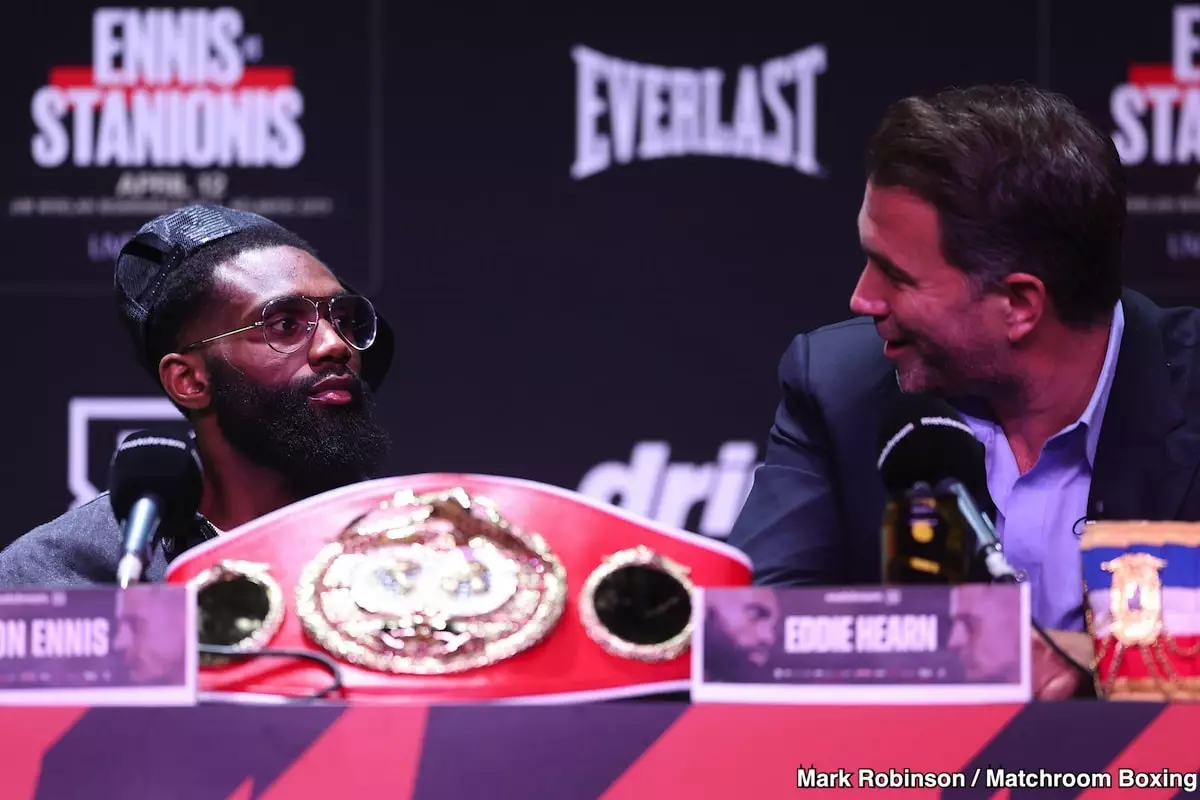Jaron ‘Boots’ Ennis, the undefeated IBF welterweight champion, stands at a crucial juncture in his young boxing career. Recently, he was faced with what many perceived as a career-defining opportunity: a high-stakes bout against fellow contender Vergil Ortiz Jr. However, Ennis opted to fight Eimantas Stanionis instead, igniting a firestorm of speculation about his decision-making process and the potential motivations behind it. Was Jaron really ducking a big-money fight, or is this merely a case of miscommunication and perception gone awry?
Fans of boxing have long debated the intricacies of fighter choices, especially when massive paychecks are involved. The rumored $8 million offer to face Ortiz serves as a testament to the stakes that were on the table. However, Ennis is insisting that the chatter around his decision is misplaced. According to him, this isn’t an issue of cowardice; it’s about practical boxing strategy and optimal career management.
Understanding Ennis’ Perspective: Miscommunication as a Shield
Ennis attributes the backlash he has faced to a significant “miscommunication,” as he called it, claiming that fans and commentators are ill-informed regarding the details and implications of his decisions. His promoter, Eddie Hearn, further complicates the narrative by suggesting that Ennis preferred not to move up to the junior middleweight division, choosing instead to grind it out at welterweight.
While it is understandable that a fighter might not want to leap into a more demanding weight class, this reluctance can be misconstrued. In a sport where the fame and fortune often accompany the bravest choices, staying put could be interpreted as avoiding tougher competition. Ortiz has quickly established himself as a dangerous opponent, leading fans to question whether Ennis is genuinely confident or if he’s deliberately sidestepping a risky relationship with this “apex predator.” With every passing day, questions about his credibility as a fighter linger in the air.
The Weight of Public Opinion: Criticism and Its Impacts
Combat sports are notorious for their passionate fandoms, and the scrutiny of fighters’ decisions can often become overwhelming. Ennis’ comments to DAZN Boxing encapsulate the battle he faces with public perception: “Nobody be ducking. Y’all crazy,” he exclaimed, clearly exasperated by the backlash. It’s a palpable tension when a fighter has to navigate not only their physical challenges but also the realm of social media commentary and fan expectations.
Despite the support from his camp, Ennis must reconcile the overwhelming volume of critiques from podcasters, YouTubers, and seasoned analysts alike. Criticism can both motivate and dissuade an athlete; in Ennis’ case, it seems to have sparked a robust defensive reaction. That concern is essential for a young champion—navigating the path of improvement while aiming to keep the supporters on his side can be a formidable balancing act.
A Broader Perspective: The Hazards of Reputation in Modern Boxing
The reputation of a boxer can be as fragile as their physical state in the ring. Insights drawn from this situation highlight the complexities athletes face in contemporary boxing landscapes, where every decision is dissected and amplified by various media. Ennis finds himself on the edge of reputation management; a misunderstanding can spiral into a narrative that could haunt a fighter’s career long after the dust settles.
Ultimately, boxing isn’t just about the punches thrown in the ring but also the perceptions shaped outside of it. The pressure to maintain an unbeaten record compounds this challenge, and for many fighters like Ennis, it creates a sense of urgency and fear about facing potentially detrimental matchups. As he presses onward with his focus on Stanionis, we’re left pondering the delicate interplay between competitive grit and the narrative constructed by public opinion. An athlete’s decisions are often reductively boiled down to black-and-white interpretations by spectators, leaving them vulnerable to misrepresentation.
In this current landscape, the fight isn’t just against another opponent in the ring; it is a duality of combatting tangible opponents while navigating an often turbulent sea of opinion that can sway even the most determined pugilist.

